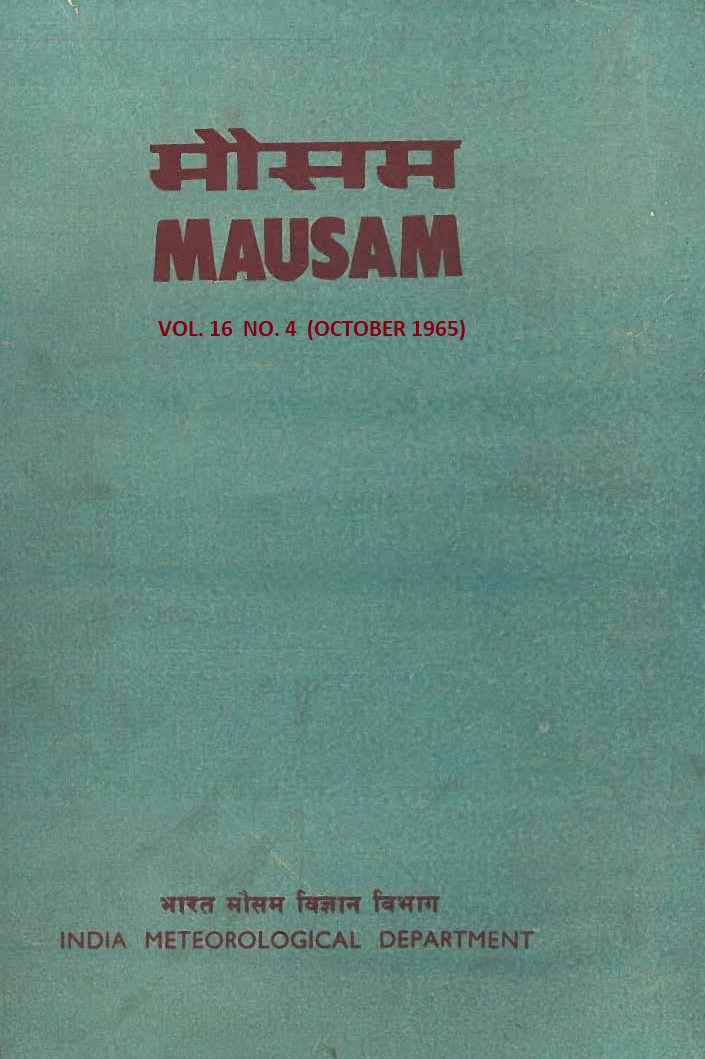Atmospheric turbidity measurements over India
DOI:
https://doi.org/10.54302/mausam.v16i4.5695Abstract
From daily measurements of direct solar radiation for selected spectral regions and for the whole spectrum, coefficients of atmospheric turbidity and transmissivity have been calculated for different months for two representative stations in north and central India. Attenuation of direct solar radiation and atmospheric turbidity are maximum at both stations, during the hot, dry, dusty summer months and a minimum during the monsoon months and after, when the atmosphere has been cleansed of its dust content by precipitation. The turbidity over Delhi is two to five times that over Poona throughout the year, as a result of its proximity to the arid zones to the west. The variations from year to year are also much more pronounced at Delhi. The sudden fall in turbidity during June as well as the turbidity values during June to September at both stations are related to the times of onset of the monsoon in the two areas and the amount of rainfall during .these months.
Downloads
Published
How to Cite
Issue
Section
License
Copyright (c) 1965 MAUSAM

This work is licensed under a Creative Commons Attribution-NonCommercial 4.0 International License.
All articles published by MAUSAM are licensed under the Creative Commons Attribution 4.0 International License. This permits anyone.
Anyone is free:
- To Share - to copy, distribute and transmit the work
- To Remix - to adapt the work.
Under the following conditions:
- Share - copy and redistribute the material in any medium or format
- Adapt - remix, transform, and build upon the material for any purpose, even
commercially.



